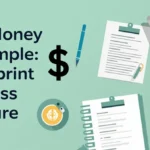The Best Fluffy Pancakes recipe you will fall in love with. Full of tips and tricks to help you make the best pancakes.
Table of Contents
Introduction to the Future of Financial Apps

The financial landscape has undergone a significant transformation over the past decade, driven primarily by the rapid evolution of technology and consumer needs. As we approach 2025, it is evident that financial apps have become pivotal tools for individuals seeking to take control of their personal finances. These applications have moved beyond basic budgeting functionalities, Read more about : Money Manager App; evolving into sophisticated platforms offering a diverse range of services designed to enhance financial literacy and management.
The emergence of financial technology, or fintech, has redefined how users interact with monetary systems. The integration of artificial intelligence, machine learning, and data analytics into financial apps has made it possible to offer personalized experiences. This shift enables users to access tailored financial advice, optimize budget allocation, and make informed investment decisions on their own terms. Moreover, the growing emphasis on security and privacy has led to the development of more robust protective measures within these applications, reassuring users about the legitimacy and safety of managing their finances digitally.
As we look ahead to 2025 and beyond, the trend toward decentralization and peer-to-peer services is anticipated to reshape existing paradigms in personal finance management. This evolution signifies a move away from traditional banking practices, allowing users to engage more directly with emerging financial platforms. Innovations such as cryptocurrency management tools and alternative lending applications are beginning to enter the mainstream, presenting an exciting opportunity for enhanced financial autonomy.
This blog post aims to delve into some of the lesser-known financial apps poised to emerge in the coming years. By exploring these applications, we will highlight how they can assist users in navigating the complexities of personal finance management while adapting to the transformative trends that continue to shape our financial future.
The Rise of Financial Apps in Recent Years
The financial technology landscape has undergone a radical transformation over the past few years, characterized by the explosive growth of financial apps. This evolution can be traced back to the increasing demand for seamless, user-friendly solutions that cater to the diverse needs of consumers in an increasingly digital world. Between 2023 and 2025, the number of financial app users rose significantly, with reports indicating that global downloads exceeded 1 billion in the latter year alone.
A myriad of factors has contributed to this trend. Firstly, greater smartphone penetration and enhanced internet accessibility have allowed more people to engage with these innovative financial tools. Moreover, as users become more tech-savvy, their preferences have shifted towards applications that provide not only basic banking functions but also advanced financial management services, such as budgeting tools, investment tracking, and real-time analytics. The pandemic accelerated these preferences, pushing consumers to seek alternative methods for personal finance management. As traditional banking practices faced limitations, fintech applications emerged as a viable solution.
During this period, the proliferation of APIs (Application Programming Interfaces) facilitated a wave of collaborations among fintech companies, enabling the integration of various services such as payment processing, cryptocurrency transactions, and personal finance management all in one platform. Furthermore, advancements in artificial intelligence and machine learning technologies have allowed financial apps to personalize user experiences, leading to increased customer satisfaction and retention.
These innovations have reshaped user behaviors, as individuals now prioritize convenience and accessibility in their financial interactions. In addition to enhancing user engagement, the growing confidence in fintech solutions has also driven an increase in investments across the sector. As we navigate through 2025, it is evident that the rise of financial apps continues to redefine the financial services landscape, setting the stage for remarkable developments ahead.
Understanding What Makes a Financial App Stand Out

As the financial landscape continues to evolve, the competition among financial apps intensifies. To distinguish themselves in this crowded marketplace, various essential features play a pivotal role. Firstly, user experience (UX) remains a cornerstone of any successful financial application. A seamless, intuitive interface allows users to navigate the platform easily, making tasks like budgeting, monitoring expenses, or investing less daunting. In 2025, effective UX will likely leverage design principles that cater to a diverse range of users, ensuring accessibility for both tech-savvy individuals and those less familiar with financial technology.
Another critical aspect is the app’s ability to integrate with existing banking systems and financial institutions. A well-connected financial app can offer users a holistic view of their financial health by consolidating data from multiple accounts. This integration not only saves time but also enhances financial decision-making by providing real-time updates on spending habits and account balances. Consequently, the reliability of banking integration can significantly influence users’ trust in the app.
Advanced security measures cannot be overlooked when evaluating a financial app’s distinction. Users are increasingly aware of the risks involved in sharing their financial data; hence, robust security features are paramount. Multi-factor authentication, end-to-end encryption, and biometric login options are becoming standard to protect sensitive information, fostering user confidence.
Finally, the integration of artificial intelligence (AI) into financial applications marks a significant advancement in personal finance management. AI-based tools can analyze user behavior and provide tailored financial insights, such as personalized budgeting recommendations and investment strategies. This customization not only enhances user engagement but also empowers individuals to make informed financial choices.
Highlighting Promising but Underrated Financial Apps
As the finance industry continues to evolve, numerous innovative applications are emerging that promise to enhance financial management for individuals and businesses alike. While many popular financial apps like Mint and Robinhood dominate the conversation, several lesser-known alternatives show significant potential in 2025. These applications offer unique features that cater to specific needs, making them noteworthy contenders in the financial technology landscape.
One such app is SpendTrack, which focuses on helping users manage their monthly expenditures with minimal effort. By utilizing artificial intelligence, SpendTrack analyzes users’ spending habits, identifies recurring expenses, and categorizes them automatically. This allows users to understand their financial behaviors and make informed decisions. What sets SpendTrack apart is its user-friendly interface and real-time notifications, which keep individuals aware of their financial standing at all times.
Another noteworthy app is WealthBuddy, designed specifically for those aiming to build and maintain investment portfolios. This application combines personalized investment advice with a social platform, allowing users to connect with financial advisors and other investors. WealthBuddy’s collaborative feature enables users to share insights and strategies, thereby fostering a supportive community. Its comprehensive analytics tools are invaluable for tracking portfolio performance and educating users on market trends.
Lastly, CreditSense is gaining traction for its innovative approach to credit score management. This app not only tracks users’ credit scores but also provides actionable tips for improving them based on current financial behavior. CreditSense offers personalized recommendations that help users understand the factors influencing their scores, ultimately empowering them to take control of their financial futures. Its blend of education and practical tools makes it a strong contender in the realm of credit management apps.
Overall, these promising financial apps showcase the diversity and creativity within the fintech sector, offering tailored solutions that may prove indispensable for future users.
Case Studies: User Experiences with Innovative Financial Apps

The evolving landscape of financial technology has significantly influenced individual users’ financial management strategies. Several innovative financial apps have emerged, demonstrating notable impacts through real-life case studies. One such application, “SpendWise,” offers budget tracking and expense categorization features. A user named Sarah reported that since adopting SpendWise, her monthly expenses have decreased by 20%. By utilizing the app’s visual spending breakdown, Sarah was able to pinpoint unnecessary expenditures and redirect her funds towards savings. This measurable outcome underscores how technology can facilitate smarter financial decisions, promoting user empowerment in managing personal finances.
Another case study highlights “InvestSmart,” an investment tracking app designed for novice investors. John, an average user with limited financial knowledge, shared his experience of using InvestSmart to navigate his initial investments in stocks and ETFs. The app provided tailored learning modules and real-time portfolio performance analytics. After six months of committing to a regular investment strategy through the app, John reported a 15% increase in his portfolio value. His testimonial emphasized the educational resources available within the app, which helped build his confidence in making informed investment choices.
In contrast, “DebtSolver” has targeted users grappling with debt management. Marie, a student burdened with loans, turned to this app seeking relief. Through its detailed repayment planner and goal-setting features, Marie was able to reduce her debt by 30% in just a year. Her feedback emphasized how the app’s reminders and motivational milestones made the repayment process less daunting. These case studies demonstrate that the integration of innovative financial apps into everyday finances can yield substantial improvements in individual money management.
The Importance of Financial Literacy in the Age of Apps
In today’s rapidly evolving financial landscape, characterized by the proliferation of innovative financial applications, the importance of financial literacy cannot be overstated. As more individuals turn to these apps for managing their finances, making informed decisions becomes essential. Financial literacy enables users to not only understand their monetary habits but also to navigate the complexities that arise with the use of technology in finance.
Financial apps are increasingly incorporating educational features designed to enhance users’ understanding of fundamental financial principles. Many applications offer in-app tutorials, articles, and interactive learning modules that cover a wide array of topics, ranging from budgeting and saving to investing and retirement planning. These resources help users grasp essential concepts and encourage them to actively engage with their financial situations. Thus, the combination of user-friendly technology and financial education equips individuals to make smarter financial choices.
Moreover, as financial apps gather and analyze data regarding users’ spending habits, they can provide personalized insights and recommendations. This personalized approach not only fosters a sense of accountability but also instills confidence in users, enabling them to take control of their financial futures. By encouraging proactive financial behaviors, these applications contribute to the overall enhancement of financial literacy among users.
To capitalize on the benefits of financial apps, individuals must prioritize their own financial education. Actively seeking resources within these applications—as well as pursuing external educational opportunities—can help bridge the gap between technology and the necessary understanding of finance. Therefore, in this age of financial apps, the emphasis must be on fostering a culture of financial literacy to empower users in making informed and responsible choices regarding their finances.
The Future Outlook: Emerging Trends in Financial Technology

The financial technology landscape is continuously evolving, and as we look towards the future, several trends are emerging that are likely to shape the development of financial apps beyond 2025. One of the most significant advancements expected is the integration of blockchain technology into mainstream financial applications. Blockchain offers enhanced security, transparency, and efficiency in transactions. As financial institutions increasingly adopt decentralized finance (DeFi) principles, we can anticipate the rise of decentralized applications that empower users to manage their finances without intermediaries, thereby reducing costs and increasing control.
Enhanced artificial intelligence (AI) capabilities are also at the forefront of future financial app development. The future will likely see AI being employed for more accurate and personalized financial advice, risk assessment, and fraud detection. With advanced machine learning algorithms, financial applications will gather and analyze vast datasets to provide insights that cater specifically to individual user needs. This predictive analytics approach can streamline budgeting, investing, and asset management, creating a more intuitive and user-friendly experience.
Moreover, the potential for virtual reality (VR) and augmented reality (AR) interfaces in financial management is an exciting area for exploration. As technology advances, these immersive platforms may provide users with interactive environments where they can visualize their investments, simulate market conditions, or navigate complex financial scenarios in a more engaging manner. Such developments could transform how users perceive and manage their finances, making financial education and decision-making more accessible and enjoyable.
In conclusion, the future of financial technology appears promising, with advancements like blockchain integration, enhanced AI capabilities, and innovative VR interfaces set to revolutionize the landscape of financial apps. As these trends evolve, they will greatly influence how individuals and organizations approach their financial needs, leading to smarter, more efficient solutions in the years to come.
Potential Challenges and Drawbacks of Emerging Apps
The rapid growth of financial applications has undeniably transformed the way individuals and businesses manage their finances. However, this evolution is accompanied by several potential challenges and drawbacks that merit careful consideration. One paramount concern is security. As financial apps handle sensitive personal and banking information, they become prime targets for cybercriminals. Instances of data breaches can lead to identity theft and financial loss. Ensuring robust security measures, including encryption and two-factor authentication, is essential for the protection of users.
Another challenge lies in accessibility. While many of these innovative financial applications offer cutting-edge features, they may not cater to all demographics equally. Individuals who lack technological literacy or access to reliable internet may find themselves at a disadvantage. Furthermore, certain apps may only be available in specific geographic locations or regions, raising fairness concerns about their availability and accessibility to various populations.
Reliance on technology is another drawback that can impact users’ financial well-being. As individuals become increasingly dependent on financial apps for budgeting, investing, and transaction management, they may lose the ability to engage with their finances in a more traditional, hands-on manner. Such dependence can lead to complacency, potentially resulting in poor financial habits or lack of understanding about one’s financial situation.
Moreover, the user interface and experience can vary significantly between applications. A poorly designed app can confuse users, leading to errors in financial management, such as incorrect budgeting or misinformed investment decisions. Ultimately, while the future of finance is bright with the introduction of new applications, it is vital to remain cognizant of these challenges and drawbacks, ensuring that technological advancements enhance financial literacy and accessibility for everyone.
Conclusion: Embracing the Future of Personal Finance

As we navigate through the evolving landscape of finance, it is evident that the emergence of innovative financial applications will significantly influence how individuals manage their financial lives. This blog post has explored several lesser-known financial apps that are poised to redefine personal finance in 2025 and beyond. These applications offer a variety of tools, ranging from budgeting aids and investment platforms to options that promote savings and enhance financial literacy.
By adopting these forward-thinking applications, consumers can benefit from personalized features and real-time financial insights that empower them to make informed decisions. Staying informed about emerging financial technology is crucial for anyone seeking to optimize their financial health. The rapid pace of technological advancements means that there will always be new options available, allowing users to explore strategies that best suit their personal financial goals.
The financial apps of 2025 will not only facilitate better management of funds but will also encourage users to develop healthy money habits through gamification and interactive learning experiences. Adapting to these innovations will be essential for effectively navigating one’s financial journey in an increasingly complex economy. Therefore, individuals are urged to remain curious and open-minded about the tools that can help them achieve their aspirations.
In conclusion, the future of personal finance holds great potential, as financial applications continue to evolve and expand. By embracing these emerging technologies and leveraging their capabilities, individuals can create a more informed, organized, and ultimately fruitful approach to their finances. Staying abreast of these trends and methodologies will serve to equip users with the means to thrive in a world of perpetual economic change.
ai monetization artificial intelligence behavioral economics blogging guide bubble cryptocurrency budgeting strategies budget management business business days business license business plan business plans cryptocurrency creation debt management debt strategies decentralized finance earn money finance development financial app financial planning fintech services freelance business freelancing business home earnings investment methods investment stocks invest stocks marketing services money blogging money management money online personal budget personal budgeting personal data personal finance real estate remote work side business small business start start business stock investment stock market stock trading successful businesses
Financial apps the best now in 2025
The financial landscape has undergone a significant transformation over the past decade, driven primarily by the rapid evolution of technology and consumer needs. As we approach 2025, it is evident that financial apps have become pivotal tools for individuals seeking to take control of their personal finances. These applications have moved beyond basic budgeting functionalities, Read more about : Money Manager App; evolving into sophisticated platforms offering a diverse range of services designed to enhance financial literacy and management.









